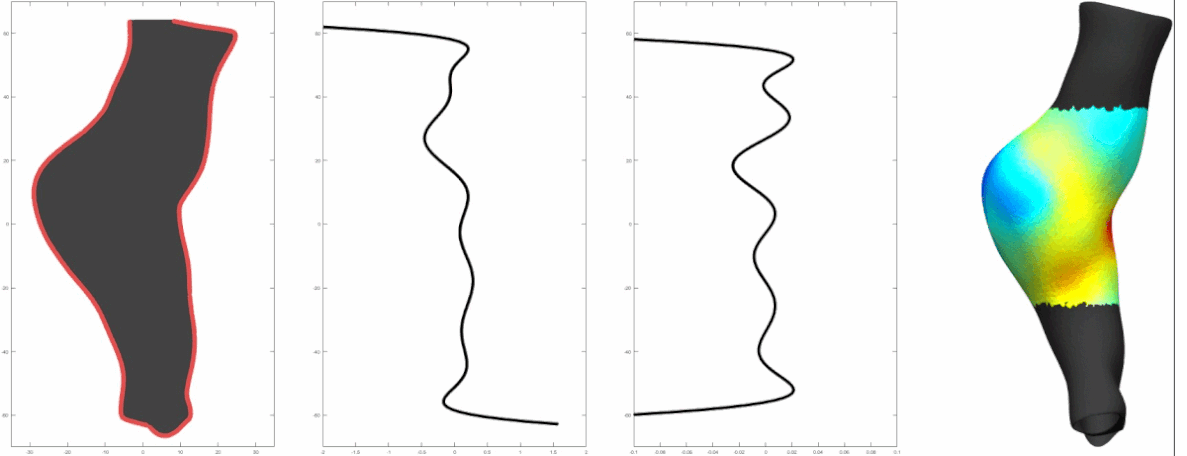Experimental Mechanics
My primary research interests are in the design and exploration of experimental mechanics. Designing new experimental techniques to evaluate the strength of vascular tissue is my passion.
Density decreases (controlled proteolytically with collagenase or elastase) are associated with decreases in tissue stiffness and ultimate strength as shown in our publication: https://doi.org/10.1016/j.jbiomech.2024.112226
Computational Mechanics
Utilizing material models based on experimental mechanical tests, computational mechanics allows researchers to explore aneurysmal mechanical properties without interfering with the patient in any way.
This presents a method for objectively differentiating the sac from the neck of an abdominal aortic aneurysm. Based on the first and second derivatives of the rate of diameter change, it offers a way to connect different research groups from subjective metrics of determining the region of interest. Please reach out if you are interested in this code! This is from a recent publication: https://doi.org/10.3390/bioengineering9110601.
Artificial Intelligence and Machine Learning
In the lab, we leverage Artificial Intelligence and Machine Learning tools to do tasks from labeling regions of interest on medical images to predict the wall strength of vascular tissue. Artificial intelligence is at the forefront of the research of myself and my colleagues.
Immunofluorescence
and Histology
Before my graduate studies, I did a lot of histology. The immunofluorescence image was taken when I was at Texas A&M University in the department of Immunology as an American Heart Association Undergraduate Summer Research Fellow and is an image of a mouse uterus and implantation chamber (epithelium in red, endothelial cells in green, cell nuclei in blue).
The histology image was done at the University of Texas at San Antonio, and is of two separately stained tissue sections of the same porcine main pulmonary artery from my first publication: https://doi.org/10.1007/s11340-020-00678-2.






